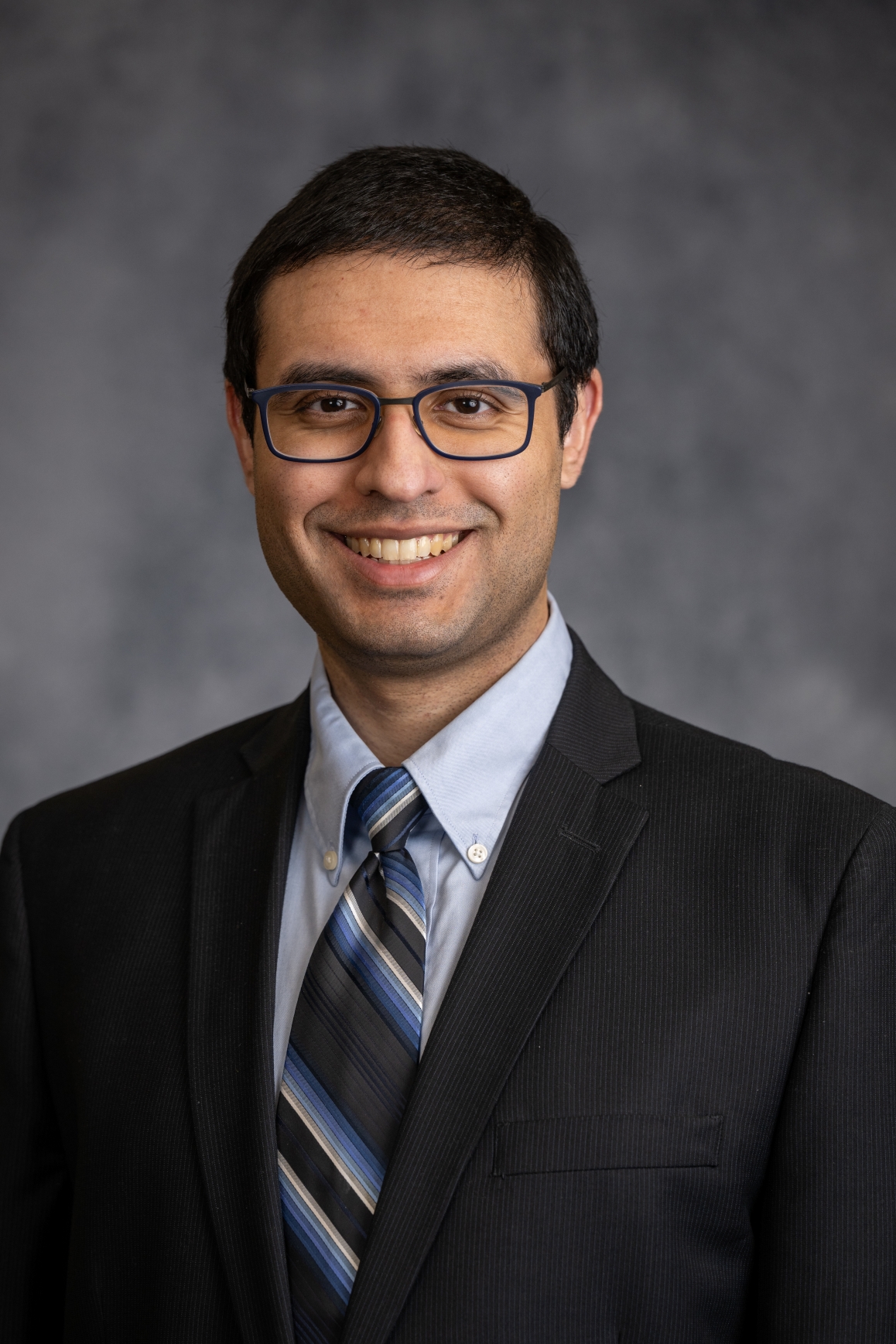Vision
There will be no single "killer app" for software/AI/ML in medicine.
Rather, there will be a constellation of technology-driven improvements
which smoothen the rough edges of our healthcare system and facilitate
the therapeutic interactions between physicians and patients.
It is these human interactions that form the core of medicine.
The role of technology is to enhance them without getting in the way.
Talking to the Data
Collecting data is easy. Extracting value from it is hard. There is so much
data in medicine now, from electronic health records (EHR), to whole-genome sequences,
to imaging studies, but we're just scratching the surface when it comes to
obtaining clinical and especially research insights from all this data.
It would be nice if we could simply "talk to the data" and find out its secrets.
Given recent advances in natural language processing (NLP) and Generative AI, this is
no longer just a pipe dream. Before long, it will be possible to simply talk to
the EHR and ask it "What happened with this patient overnight?" or
"How has this patient's lung cancer been managed thus far?" and receive
concise answers. This will greatly speed up chart review and pre-rounding.
One could go further and ask it "What happened during this hospitalization?"
thereby generating a discharge summary, saving significant time when
discharging a patient from the hospital.
NLP and Generative AI also have tremendous potential in research. When designing
cohort studies, a researcher would be able to ask the EHR "Give me a list of all
patients who have had [X] exposure, and for each patient in the list, give me [N]
patients with similar age and demographics." The chart review work in cohort
studies, in this way, can be largely automated. NLP can also be combined with
unsupervised ML approaches such as clustering to ask the EHR questions like
"Cluster all our dementia patients into [N] groups based on data documented in
the EHR." Such queries may help identify new subtypes of known diseases or even
new diseases entirely. It will also be possible to further query the system to find out
what features were most salient in assigning patients to clusters. As these two
examples illustrate, NLP and Generative AI can greatly accelerate biomedical research,
freeing up researchers to do higher-level work.
Diagnostic Assistant
Diagnostic specialists, including radiologists and pathologists, play a central role
in modern patient care. But they have a difficult job. They must sift through large
volumes of data (an MRI may include more than 10 sequences, each with hundreds of
individual images) and accurately identify all potentially relevant abnormalities, while
ignoring irrelevant findings and artifacts, and interpret them in the context of
the patient's clinical presentation. And with the tremendous growth in
clinical volume of imaging studies and pathologic specimens far outpacing
the training of new radiologists and pathologists, these specialists are performing
their critical duties under immense time pressure. AI could be a boon to these
doctors by taking over repetitive tedious tasks, such as finding lung nodules
or labeling vertebrae, so these physicians can focus their time on more complex
and nuanced matters.
AI is also capable of uncovering biologically and clinically significant insights
in images that are not apparent to the human eye. For example, a team of researchers
at Google and Stanford found
that deep learning could identify risk factors for
cardiovscular disease by examining retinal fundus photographs. AI is not simply
a tool to automate tasks currently done by humans. It can do things no human
can do, and thereby empower physicians with super-human tools to diagnose and treat disease.
Personalized Guidelines
In the previous section, we discussed how emerging technologies can help physicians
diagnose patients. Now, we turn our attention how these technologies can help them
treat patients.
Physicians often talk about balancing evidence-based medicine with clinical judgement.
They rightly point out that while practice guidelines derived from large randomized
controlled trials may have strong statistical evidence, they may not apply to
individual patients for many potential reasons, including demographic differences between
the particular patient in question and the study population, comborbidities of the particular
patient, and the particular patient's history of response to the therapy in question,
or to similar therapies. This puts physicians in the position of modifying or sometimes
disregarding evidence-based guidelines and relying instead on their clinical reasoning.
Due to their intellect, they are usually able to do this well, with good patient outcomes.
However, there is the potential for sub-optimal decision-making. One of the tantalizing
possibilities of AI is to synthesize all of the clinical reasearch available in the world
to obtain large, diverse datasets and the use these datasets to generate practice
guidelines uniquely tailored to each patient. For this to work well, patients of all
backgrounds need to be sufficiently represented in the data, and while this may not always
be the case today, as more and more data is collected, this approach will yield better
and better results. This will enable physicians to make decisions with more confidence
and also improve the equity of patient care, as patients from all backgrounds will be
able to benefit from personalized evidence-based medicine.
Gateway
In the prior two sections, we discussed how emerging technologies could improve
the quality of patient care, in both diagnosis and treatment. Now, we turn
our attention to how technology could improve patients' access to healthcare.
This will be the focus of this section and the next.
Indeed, access is one of the biggest challenges facing healthcare today, driven by the high cost
of care (and insurance), the chronic shortage of physicians, and a growing and
aging population. A key observation here is that not all patient concerns
require the attention of a physician. For example, if a patient stubbed their toe
on furniture or accidentally got soap in their eye, there are common-sense
remedies that can be tried before considering reaching out to a medical provider. Many
patients do this anyway, but some, especially the "worried well," may feel the
need to enter the healthcare system for these concerns. Other concerns, such as
headaches or upper respiratory infections, may require some medical advice, but
could be managed by an NP or PA rather than a physician unless the patient has
serious comorbidities. Some concerns require an in-person visit, while for others,
a video visit or a chat message may suffice.
A Generative AI-powered chatbot could serve as patients' first point of contact
with the healthcare system. It could ask the patient questions to understand
their concern and take a brief history. Based on this information, it could
decide whether this concern needs the attention of a human medical provider.
If the condition is serious, it could recommend going to an Emergency Department
and even contact first responders if the patient consents to it. If the patient
ends up meeting a human medical provider, the history taken by the chatbot could
be made available to that provider and be used for
triaging
or for generating a draft of an EHR note.
App Pharmacy
In the age of Smartphones, the concept of an App Store is well-established.
We could extend this concept to an App Pharmacy, where patients download
Apps that help them manage their health. It is
conceivable
that these Apps could be regulated and prescribed like drugs or medical devices.
There are already apps that help patients manage their
diabetes and
mental health.
The power of these apps lies in the fact that patients spend the vast
majority of their time outside the healthcare system, and that it is outside the
healthcare system that the long-term trajectory of patients' health is determined.
Patients can interact with Apps all day, every day, providing high-touch
assistance that promotes continued adherence to the recommendations provided by their
primary care physicians at annual or biannual appointments. Apps can
also integrate relevant data from wearable health-monitoring devices.
In this way, Apps can extend primary care physicians' capabilities to provide both primary
prevention and disease management for chronic conditions, thereby improving
length and quality of life, and decreasing the need for hospitalization.
Having discussed how technology can advance both quality and access to patient care,
we now turn our attention to improving physician wellness, which will be the focus
of the next three sections.
Robo-Scribe
During medical school, one of the most common complaints I have heard about
electronic health records (EHR), especially in the outpatient setting,
is that when they are in the room with a patient, they are forced to spend
much of their time looking at the computer screen instead of making eye-contact
with the patient. Physicians are often under pressure to see as many patients
as possible each day, with no time between patients for documentation and
other tasks. So, to avoid spending hours at the end of each day writing all
the notes, doctors often must write much of their notes while in the room
with patients. Some physicians are fortunate to have a scribe present
to draft these notes, allowing them to focus on the patient. But scribes
are expensive and simply not available in many practices. Advances in
natural language processing
enable
the computer to serve as
a scribe and generate a first draft of a note for the physician to then
edit and sign. This will be huge in enabling physicians to be fully
present when talking to their patients, helping restore natural
human physician-patient interactions and improving both physician
and patient satisfaction.
Billing Assistant
Part of the reason we hear so many complaints about electronic health records
(EHR) is that modern EHR systems were optimized for billing rather than
patient care. On top of this, in many practice settings, physicians
are required to include information in clinical notes irrelevant to patient care,
often for the purpose of justifying a certain billing level. These include things like
time spent, medical decision making complexity, and patient comorbidities.
Natural language processing (NLP) and generative AI have the potential to
take us back to a time when clinical notes were purely for chronicling what was
done in the pursuit of patient care. These technologies can read the note
written by the physician, identify what billing level is appropriate, and generate
a justification of that billing level. This way, we can remove one hassle from physicians'
plates and give them more time with their patients.
Office Assistant
There are many office tasks that take physicians' time away from patient care,
especially in the primary care setting. One example is insurance prior
authorization requests. With Generative AI, it will soon be possible to
have the computer draft a prior authorization request letter for the physician to then
look over and edit as needed before sending. This will greatly reduce the
time spent on these letters while still ensuring that the physician's
judgement is reflected in the final communication. A similar approach can be
taken with EHR in-basket messages. Many primary care physicians report spending
one or two hours after work responding to these messages. Applying generative AI
may cut down most of this so-called "pajama time," giving doctors more time to spend with their
families and recharge before the next day of work.
This technology can also be very helpful to patients. It could read the
clinical note and draft an after-visit summary that communicates to the patient
in lay terms what happened during the appointment and the necessary follow-up
tasks recommended by the doctor. Outpatient office visits are often time-constrained
and the information discussed may sometimes be overwhelming for the patient to remember.
Providing patients a comphrehensive and reliable after-visit summary,
accessible at any time through the patient
portal, can help the patient remember key points,
improve adherence to recommendations, and reduce the number of questions
sent to the phsyicians as in-basket messages. Over time, the patient will feel
more "in the loop" regarding their care, leading to a stronger therapeutic alliance.
Virtual Reality for Education
We devote this final section to education. It is clear how generative AI
can be a study aid by summarizing information and even creating and answering
test questions; many medical students already use it heavily in their studying.
We therefore turn our attention to another emerging technology with great promise
in the education of not only medical students but also patients: Virtual Reality (VR).
Starting with medical education, 3D VR can be incredibly helpful, especially
in visual subjects such as anatomy. Current textbooks and atlases of anatomy
contain hundreds of labeled images to teach students, but nearly all
are limited to a 2D plane, making it difficult for some students to imagine
how some structures are related in space. Some examples of structures difficult
to understand from 2D images include the peritoneum in the abdomen and the bony
labyrinth of the inner ear. 3D VR experiences would greatly enhance student
learning in these areas. In fact, some medical schools
have already adopted them
in their curriculum.
VR can be similarly helpful in patient education, indeed even more so,
given patients' lack of familarity with medical concepts and terminology.
Without a background in biology or medicine, it is difficult to visualize
what physicians are talking about when they describe diseases and proposed
treatments, especially procedures. Supplementing the physician-patient
discussion with 3D VR "experiences" (i.e. videos) (e.g. cellular processes,
organ physiology, surgeries, etc.) will
enable patients and family members to see and develop an intuitive understanding
of what is being discussed, even if they do not know the terminology and
full details.



